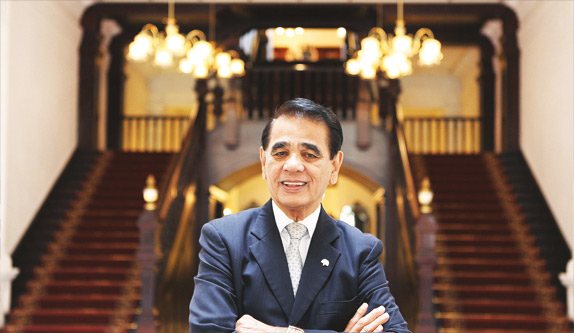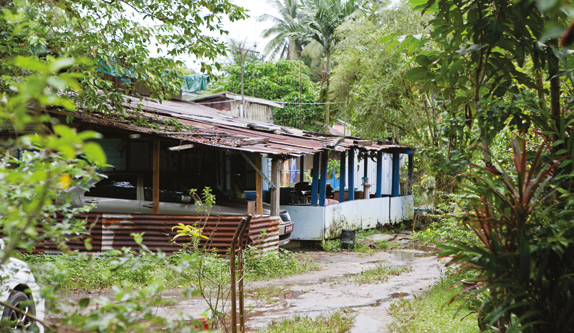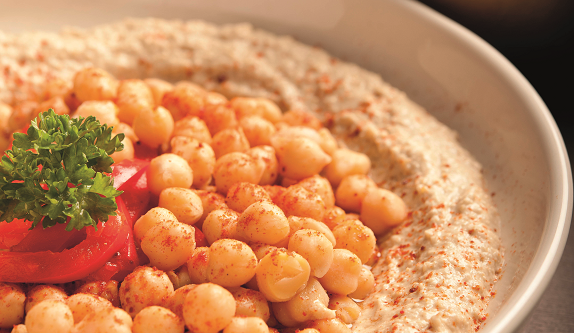
In Singapore’s northeast, you’ll find a tiny village which harks back to when the country was a collection of small settlements. Kieran Nash went there to see what life was like more than 50 years ago.
I’m walking through a shabby collection of ramshackle houses, connected by a rutted, muddy dirt track filled with puddles. Dogs are barking, and chickens squawk as they bob and weave down the wet driveways.
Most of the houses, in muted tones of gaudy colours, have gaps in the weatherboards and rusting, tin rooves. The humidity is oppressive, and clouds of mosquitoes swarm from the overgrown bush.
I could be in one of any small villages Asia – Indonesia, Cambodia, or Malaysia. Vietnam, maybe. But one place that doesn’t come to mind is Singapore – the clean, futuristic, spick-and-span Red Dot.
But I have come to Lorong Buang Kok, also known as the last kampong. It’s a collection of 28 single storeyed houses, and one of the last scraps of Singapore that progress has left alone.
Wandering around, I find most residents I talk to are not too comfortable speaking English. That is, until I run Richard (who declined to give his last name), an elderly man relaxing on his veranda with a friend. Stacks of newspapers lie against the wall, and a large Singapore flag hangs on the wall above where he sits.
The 69-year-old retired accountant has been here on-and-off for 50 years. His parents owned the house before him.
“We had this place when I was about 10 years old, then it was a provision shop. At that time we had a very big kampong here. We had over 100 resident families here. In the 60s, 70s, 80s – up to the 90s.”
He points to a large field nearby, fringed with a wall of tall, white, uniform HDB blocks, and says as the government acquired more land nearby, the kampong shrank.
“They acquired one building after the other. Our provision shop catered for all the families staying there. We were the only provision shop. [Then] the government acquired the land and most of the families moved out, and there was not as much business.”
In the 1990s, a Fairprice supermarket opened across the road and his family closed the store.
It’s a good life at the kampong, says Richard. Although he doesn’t live there anymore, he comes often to visit his friends and collect rent from his tenants.
“We have friends come and visit us down here, come and chit-chat. Play some games. We still have our Chinese custom celebrations and Hari Raya, other than that it’s very quiet, better than those in the housing block.”
When he was a schoolboy, he spent his time playing with his friends in what was a remarkably multicultural setting.
“There were a lot of children and we would ride bicycles around here. There was a common toilet outside, then every evening when you would come from school, all the children would group together, the Chinese, the Malay, the Indian, all together. And we have Indian families who can speak Chinese. It’s from this place I learned how to speak Malay.
“We learned from each other.”
At that time, there was what he called “kampong spirit”.
“It’s a Malay term, kampong. It’s a village where everybody knows everybody. Here last time, with over 100 families, we knew everyone.
“If you stay in housing block apartments, how do you know your neighbour?
He reckons that kampong spirit has disappeared.
“It’s already lost. A long, long time ago.
“Now, nothing, all the children grow up and stay in a HDB. This place is too small for them.
“Only old people like us, don’t know where to go, come here.”
That said, it’s an easy life for Richard – and the rent is reasonably priced.
The land belongs to Sng Mui Hong, who everyone in the kampong seems to refer to as “the landlady”.
Ms Sng inherited the land from her father, and lives in the Kampong with her tenants. When I approached her, she told me her English was not up to scratch and so couldn’t talk.
Media reports have said the land is worth as much as $33 million, but Ms Sng charges her tenants between $6.50 and $30 per month. She told The New Paper that although she could sell up and move into a huge bungalow, nothing could replace the feeling of simplicity and freedom she gets from the kampong.
She told the paper: “I take after my father in my philosophy of life. As long as I have enough to eat, I don’t hunger after money or to be rich.”
The kampong could also be living its final days, though – CNN reported in 2009 the government planned to demolish the kampong to build schools and housing.
Richard agrees, fearing for the future of the place. “Very soon this place will be demolished. A lot of people are saying that. Very soon.
“Once the buildings approach nearer to us, all this will be gone. What can you do?”
But another kampong resident, 23-year-old Sasha Anuar, disagrees.
“Every year I hear the same old thing – another two years, another three years – but if they were to take this land, they couldn’t replace something like this.”
Sasha was born in the Kampong, moved out to an apartment and then returned five years ago.
She enjoys the peace and quiet of the place.
“If you’ve ever stayed in a pigeonhole HDB flat in Singapore, you will totally find this a different atmosphere. It’s really quiet – you can’t even hear other footsteps or any vehicle sounds. It’s birds chirping, and all this.
“Fifty years ago, everything was like this.
“In a flat you need to share with a lot of people. This one is your own property. Next neighbour is next neighbour. You won’t hear them through your four-sided walls.”
She says the whole kampong is very lively, especially during festive season.
“It’s super cool. On Hari Raya, that is the time you should come here. You can see all the customs coming round here for the Malay community.”
It is a predominantly Malay community, with some Chinese tenants. “However they still know how to converse in Malay, so it’s not a problem for them to join us.”
Living in such a unique place attracts a lot of interest from her curious friends.
“They always want to come here for some different reason. They always want to come here at night to go ghost hunting.
“A lot of them don’t even know this place exists. Some of them at age 30 don’t even know this place exists, even though they’ve live here their whole life.”
She says it’s important to keep the last kampong alive, as a connection between modern Singapore, and the Lion City of times past.
“The youngest generation might be blown away by the latest technology and forgetting what actually what their forefathers faced back in the 50’s. Some of my friends don’t know this place exists – what about their children?”
That’s what has brought Jade Goh and her family to the kampong. I ran into the Goh family as I had just arrived. She was there to let her kids experience what Singapore was like half a century ago.
Her daughter Elsa, 7, said “it’s good. It doesn’t have any tall buildings, it just looks like a Kampong.”
For Jade, it’s important her children see Singapore’s village roots.
“In Singapore we don’t see any place like this anymore. I want them to know that old Singapore is like this.”
This article was originally published in October 2013.
 Photo 1 – Looking down on Fish markets in Sai Kung, Hong Kong.
Photo 1 – Looking down on Fish markets in Sai Kung, Hong Kong. Photo 2 – Detail from Tian Tan Budda, Hong Kong.
Photo 2 – Detail from Tian Tan Budda, Hong Kong. Photo 3 – Children heading to school in Bhutan wearing compulsory traditional dress.
Photo 3 – Children heading to school in Bhutan wearing compulsory traditional dress. Photo 4 –Lady holding fish – Ho Chi Minh market
Photo 4 –Lady holding fish – Ho Chi Minh market Photo 5 – This sums up Hong Kong for me – lots of traffic, lots of people, old and new all stacked up on each other.
Photo 5 – This sums up Hong Kong for me – lots of traffic, lots of people, old and new all stacked up on each other.









